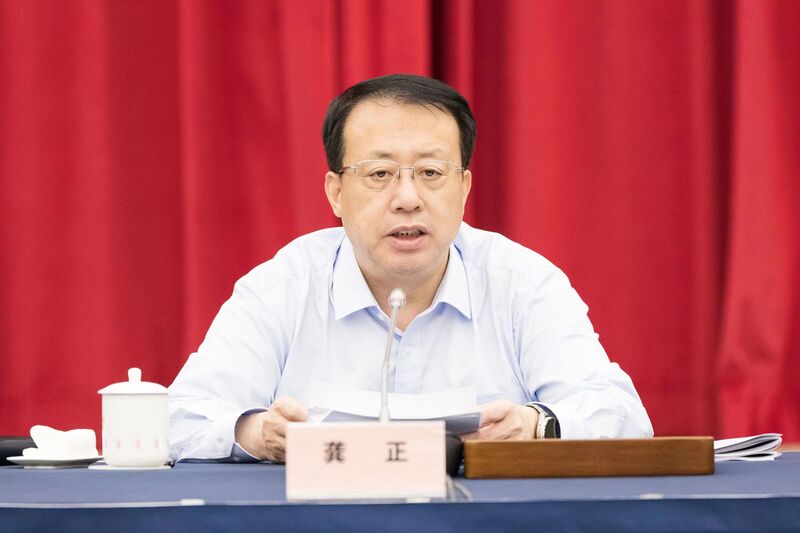Shanghai Old Traditional Chinese Medicine Begins to Take Western Medicine as an Apprentice | Looking Back at Shanghai Research, Mao Zedong Demands "Unity between Chinese and Western Medicine" | Traditional Chinese Medicine | Shanghai
Traditional Chinese Medicine accepts Western medicine as an apprentice? This matter should be discussed before the liberation, and Xia Zhongfang, a well-known traditional Chinese medicine practitioner in Shanghai, would never believe it.
He never expected that his Western medicine disciple would one day be able to "graduate" and lend a helping hand when he was too busy to handle many tasks.
In fact, this was not uncommon in Shanghai in the 1950s and 1960s. At that time, under the call of the Central Committee of the Communist Party of China, a wave of learning traditional Chinese medicine from Western medicine and integrating traditional Chinese and Western medicine emerged in Shanghai, significantly improving the quality of medical care and receiving praise from a large number of patients.
In the 1950s and 1960s, traditional Chinese medicine teachers were teaching courses on human meridians and collaterals
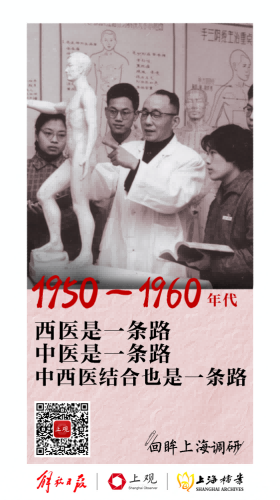
From "not understanding" to "having a strong drive"
As one of the earliest regions in China to be exposed to Western medicine, Shanghai has produced a group of pioneers in the integration of traditional Chinese and Western medicine, including Zhou Xueqiao, Ding Fubao, Yun Tieqiao, and Lu Yuanlei. In 1904, Zhou Xueqiao founded the "Medical Daily" in southern Shanghai, introducing Western medicine and studying Chinese and Western medicine. He advocated for "melting Chinese and foreign medicine, preserving national essence, and integrating Chinese and Western medicine". He used a thermometer and stethoscope in clinical practice, and used both Chinese and Western medicine in combination, without sticking to any particular style, in order to achieve practical results.
In 1904, Zhou Xueqiao founded the semi monthly magazine "Medical Daily" in Shanghai, introducing Western medicine and researching the integration of Chinese and Western medicine. This is also one of the earliest medical journals in modern China
At the beginning of the founding of New China, there were more traditional Chinese medicine and less Western medicine. How to handle the relationship between traditional Chinese and Western medicine has attracted high attention from the Party Central Committee.

The first Health Work Conference of New China was held in Beijing from August 7th to 19th, 1950. In his inscription for the conference, Mao Zedong clearly put forward the requirement of uniting Chinese and Western medicine: "Unite the medical and health workers of both old and new parts of China and the West, form a consolidated united front, and strive for the great work of people's health." The first Health Work Conference established the policy of "uniting Chinese and Western medicine", which was parallel with "facing workers, peasants, and soldiers" and "prevention first", as the three major principles of health work in New China.
Since 1954, some Western medicine practitioners in Shanghai have established teaching relationships with traditional Chinese medicine practitioners to study and research traditional Chinese medicine. In 1955, some hospitals established inpatient and outpatient services in traditional Chinese medicine and integrated traditional Chinese and Western medicine wards, and hired traditional Chinese medicine consultants or contracted traditional Chinese medicine practitioners to provide consultations and treatment. However, the large-scale integration of traditional Chinese and Western medicine only began in 1958.
In April 1961, the Education and Health Work Department of the Shanghai Municipal Party Committee formed a Traditional Chinese Medicine Investigation Working Group, which lasted for a month and a half. The group adopted a combination of holding seminars and on-site visits, and held 17 seminars. They visited nearly 100 Chinese and Western physicians, professors, nurses, and leading cadres at the Second Medical College and the Sixth Hospital, and produced three special reports on the learning of traditional Chinese medicine in Western medicine, the integration of Chinese and Western medicine, and the improvement of traditional Chinese medicine professional training.
In 1961, the Education and Health Work Department of the Shanghai Municipal Party Committee conducted a survey and research on issues related to Western medicine and traditional Chinese medicine, integrated traditional Chinese and Western medicine, and further education in traditional Chinese medicine. The picture shows research archives related to the integration of traditional Chinese and Western medicine
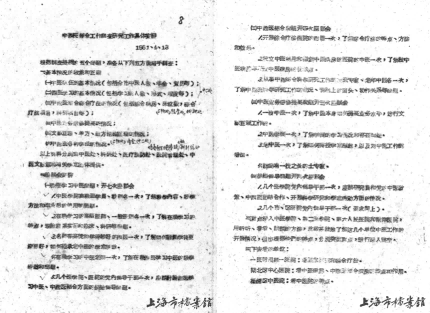
"At the beginning, some people were not familiar with traditional Chinese medicine or believed that it was' unscientific '. Learning traditional Chinese medicine was a' reverse start 'and they were unwilling to learn it. The report mentioned that the integration of traditional Chinese and Western medicine gradually developed after 1958 with the widespread development of Western medicine learning activities, going through a process of learning, combining, re learning, re combining, and deepening step by step.".
How to improve the self-awareness of learning traditional Chinese medicine in Western medicine? This is the first issue that needs to be addressed when carrying out the work of integrating traditional Chinese and Western medicine. After repeated education and the emergence of new demands in practical work, more and more Western doctors have seen the therapeutic effects of traditional Chinese medicine in clinical practice, and have developed an interest in learning. Although some people may experience wavering and fear of difficulties due to encountering some inexplicable problems halfway through, after truly putting in hard work, they feel that the more they learn, the more they gain flavor, confidence, and greater perseverance.
Acupuncture and moxibustion Bronze Man
On the other hand, there are also differences within traditional Chinese medicine. Research has found that some traditional Chinese medicine practitioners believe that "it is difficult to learn, learn a little, calculate a little", while others believe that "I will do my best to teach Western medicine", while others believe that "I will do my best to improve and actively teach Western medicine". Therefore, strengthening the ideological work of traditional Chinese medicine has also become an important prerequisite for exerting its role.
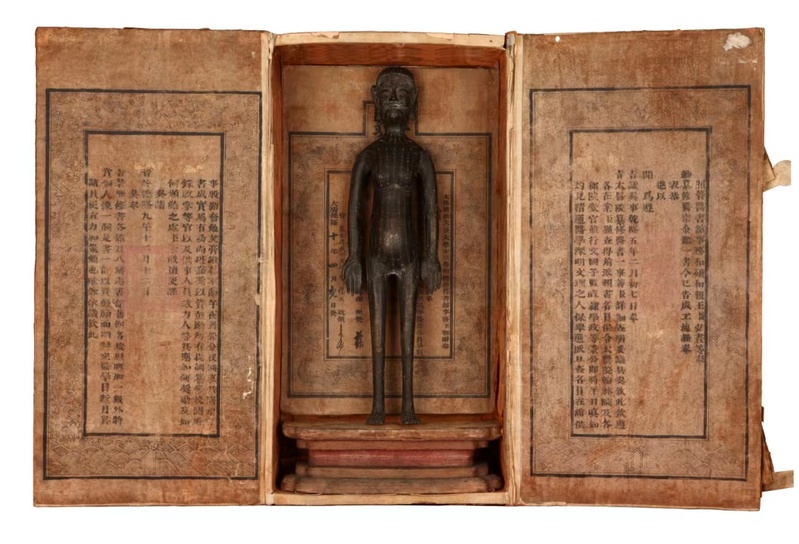
On the basis of doing a good job in the ideological work of traditional Chinese and Western medicine, Shanghai has held two sessions of Traditional Chinese Medicine Research Courses for Western Medicine Resignations, with 142 graduates; We have established a Western medicine in-service learning and research class on traditional Chinese medicine, and organized 366 Western doctors to systematically study traditional Chinese medicine for two and a half days a week. Flexible and diverse learning methods cater to the practical needs of Western medicine professionals of different age groups and professional technical levels. For example, due to the heavy workload of senior physicians in diagnosis, treatment, teaching, and research, it is inconvenient to escape. Therefore, short-term rotation training, self-study, or linking with famous traditional Chinese medicine practitioners, and making close friends are adopted for learning; And general physicians participate in various training courses or combine clinical learning.
Due to the fact that all classic works of traditional Chinese medicine are in ancient Chinese, the report also suggests that Western medicine practitioners who learn from traditional Chinese medicine should have a certain foundation in ancient Chinese, and the age range should be between 30 and 40 years old. Choosing students appropriately is closely related to the quality of learning. This is also an improvement direction based on the experience of two research classes and research.
In the training class of traditional Chinese medicine, teachers of traditional Chinese medicine teach students acupuncture and moxibustion courses
"The whole city should consider this work comprehensively."
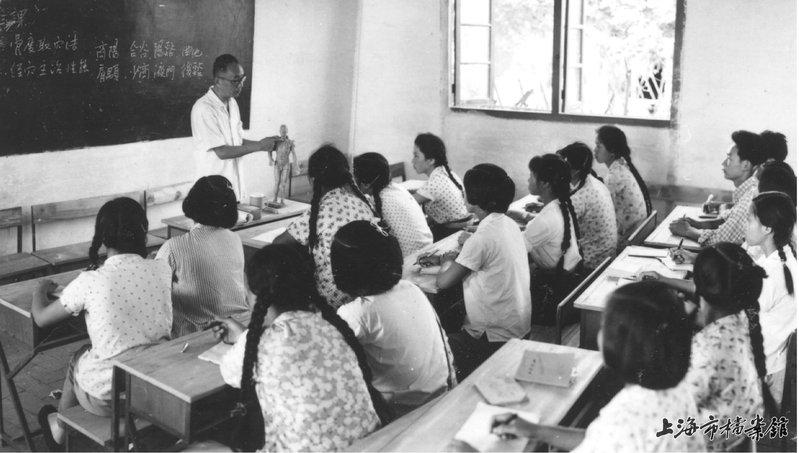
As the level of learning traditional Chinese medicine in Western medicine continues to deepen, some unexpected problems have also arisen.
Xia Zhongfang's Western medicine disciple was Chen Yuying, the attending physician of East China Hospital at that time. For over a year, Chen Yuying has been learning, applying, researching, and summarizing while basically mastering the theory of traditional Chinese medicine, and can replace Xia Zhongfang in handling many things.
Shanghai University of Traditional Chinese Medicine in the 1960s
However, not all teaching progress has been so smooth. Research has found that the relationship between teachers and apprentices who had already become apprentices at that time was still unclear, and teachers were hesitant to provide bold guidance, which affected teaching and learning. So the working group proposed that the whole city should consider this work comprehensively, clarify the tasks for the apprentices, require them to learn all the academic experience of the teacher, and then help them organize medical records, summarize clinical experience, and set a deadline for the graduation of the teacher, in order to strengthen the sense of responsibility of both the teacher and the apprentice.
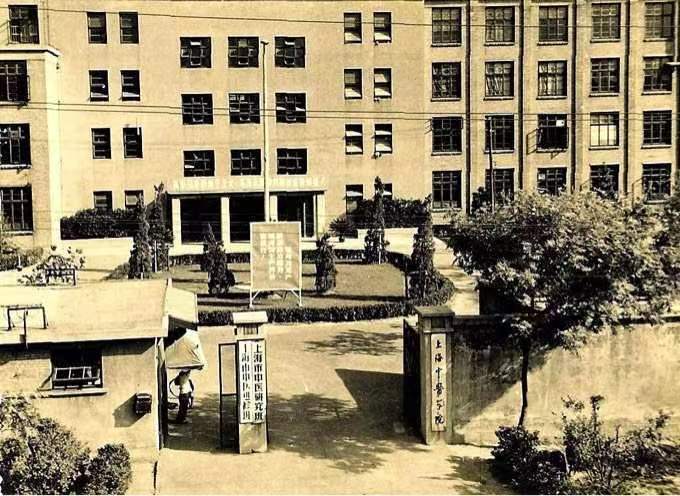
In addition, the traditional Chinese medicine team itself has the problem of uneven levels, and at that time, a traditional Chinese medicine practitioner usually had to visit 40-50 outpatient clinics for half a day, with busy daily business, which all affected the implementation of teaching tasks. After research, Shanghai has focused on reducing the outpatient tasks of some elderly traditional Chinese medicine practitioners, assigning dedicated personnel to help organize pulse records, and helping traditional Chinese medicine practitioners improve their professional skills and solve the problem of insufficient teaching staff.
The inpatient department of Shanghai Longhua Hospital in the 1960s
At that time, the integration of Chinese and Western medicine was mainly divided into four forms: integrated Chinese and Western medicine beds, integrated Chinese and Western medicine wards, integrated Chinese and Western medicine consultations, and integrated Chinese and Western medicine research outpatient clinics. Most major hospitals in Shanghai start exploring the law of combining traditional Chinese and Western medicine from a single disease or department. For example, the Sixth Hospital starts with asthma, and the Internal Medicine Department of Guangci Hospital starts with hyperthyroidism. During this process, some Chinese and Western medicine have different opinions on how to calculate the efficacy of comprehensive therapy, as well as the evaluation of the role of traditional Chinese medicine and Western medicine in comprehensive therapy.
"Eating traditional Chinese medicine is definitely effective, which is thousands of years of practical experience," said some traditional Chinese medicine practitioners.

"In recent years, modern medicine has also been developing, and treatment methods have been improved. Even without taking traditional Chinese medicine, the therapeutic effect can be improved," refuted Western medicine.
Workers from Shanghai Traditional Chinese Medicine Factory are processing and processing Chinese medicinal materials
In this regard, the investigation working group acknowledges that "it is much more complex to conduct experimental controls when several therapies are combined.". But this is not helpless, the key is to conduct scientific analysis of comprehensive therapy and solve the problem of some Chinese and Western medicine not accepting each other. Xia Zhongfang once said, "Traditional Chinese and Western medicine should be open and open, and they should share their differences with each other. Don't let everyone take credit for it, but let everyone take credit for it."
Strengthening the integration of traditional Chinese and Western medicine has achieved good results through continuous improvement. On July 28, 1961, a report in the Liberation Daily showed that according to statistics from 5 medical colleges and 35 medical units affiliated with cities and districts in the city, more than 80% of Western doctors have learned traditional Chinese medicine to varying degrees through various means. "Physicians have reported that traditional Chinese medicine is good, Western medicine is good, and the combination of Chinese and Western medicine is better.".

More than a hundred diseases have significantly improved therapeutic effects
By July 1961, the integrated therapy of traditional Chinese and Western medicine had been widely applied in clinical practice, with a preliminary count of over 100 diseases being treated. Among them, there were more than ten diseases with significantly improved effects, such as advanced schistosomiasis, hypertension, asthma, ulcer disease, orthopedic diseases, and acute abdominal diseases such as acute appendicitis, biliary roundworms, and intestinal obstruction. Some of them were able to avoid surgery, shorten the course of treatment, and reduce the pain of patients.
The patient recovered and was discharged after receiving traditional Chinese medicine treatment
Schistosomiasis has been a persistent disease that has plagued the Chinese people for thousands of years. This gray white linear insect, which is invisible to the naked eye, poses a great threat to humans. After hatching into water, the eggs of the worm form larvae, which then burrow into the snail's body for asexual reproduction, giving birth to countless cercariae, and then burrow into human and animal bodies to parasitize.

In densely populated areas such as the Yangtze River and rural areas in southern China, people who come into contact with water during paddy cultivation or daily life can be infected in just a few seconds. Most patients have large bellies like a drum and thin bones, known as "big belly disease", with a high mortality rate.
Rentun Village in Qingpu, Shanghai is a severely affected area for schistosomiasis. According to records, in the twenty years before liberation, 499 people in the village were killed by schistosomiasis, and the crying of babies could not be heard in the village for seven or eight consecutive years. After the liberation, a schistosomiasis prevention and control station was established in Qingpu County to conduct investigations and investigations on the prevalence of schistosomiasis throughout the county, and to adopt a "combination of prevention and control" medical treatment measures. After several years of hard work, the prevention and control work has shown initial results.
In the suburbs of Shanghai in 1963, doctors promoted the prevention of schistosomiasis while also providing consultations for farmers
The combination of traditional Chinese and Western medicine has played an important role in the treatment of schistosomiasis. Many medical workers have found that adopting a combination of traditional Chinese and Western medicine to treat late stage patients greatly shortens hospitalization time and reduces treatment costs. By 1959, through the implementation of the principles of combining traditional Chinese medicine with western medicine and promoting both local and foreign medicine, patients had generally been treated, most of them had recovered, the incidence rate had significantly decreased, and the source of infection had basically been controlled.

The movie "Spring in the Dead Wood", released in 1961, tells the story of how New China eradicated schistosomiasis in rural areas of Jiangnan by promoting the combination of traditional Chinese and Western medicine. In the movie, the "Tuyang Controversy" between the expert "Luo Zhanzhang" who excels in "local remedies" and the expert "Dr. Liu" sent by the provincial capital also had a certain representativeness at that time.
A scene in the movie "Spring on a Dry Wood" about eradicating schistosomiasis
But as a traditional Chinese medicine practitioner at Renji Hospital said in the movement of integrating traditional Chinese and Western medicine: "The development of science allows for the search for truth through different channels and methods. Western medicine is one path, the combination of traditional Chinese and Western medicine is one path, and traditional Chinese medicine is also one path.". The key is whether these methods are truly beneficial for saving lives and helping the injured, rather than anything else.




